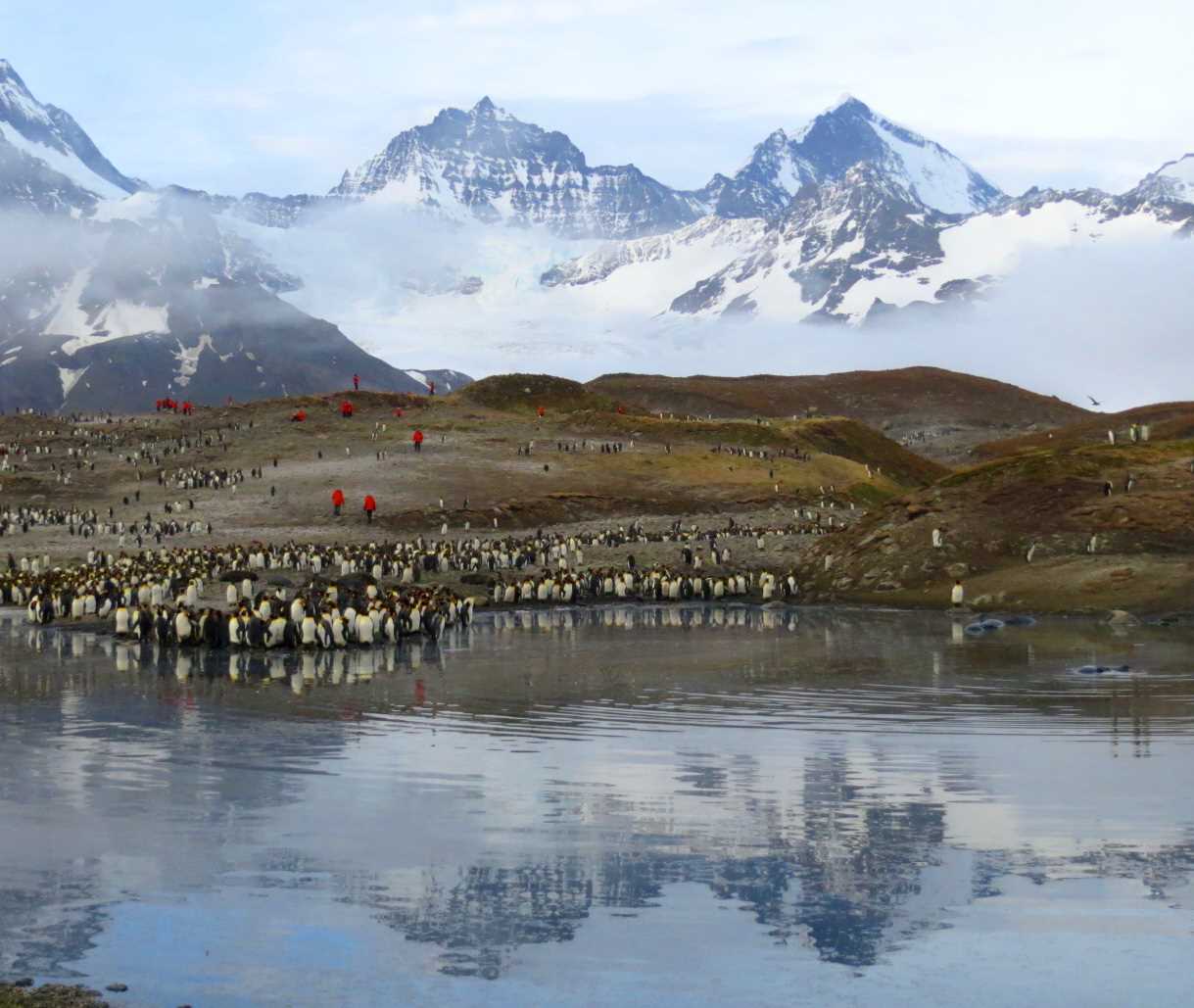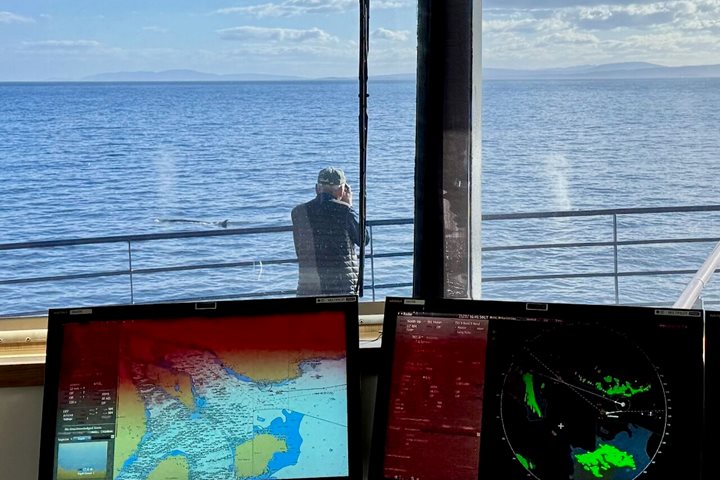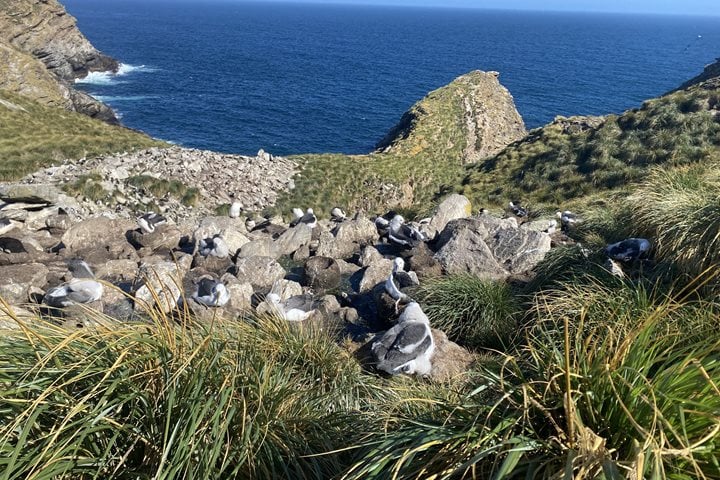In the grey, pre-dawn light National Geographic Orion slides into its anchorage off a crowded beach on the southeast coast of South Georgia. Although it is only 5:00 a.m., we are an enthusiastic bunch and in quick succession the Zodiacs are filled and dispatched, landing us on a swath of wild gravel that is absolutely packed with wildlife. It’s a terrible place to be if you don’t like penguins and seals because this place is literally crawling with them. Over 60,000 pairs of king penguins nest here and they delight us as they go about their normal routines. Just pick a spot on the beach and you are surrounded by birds parading, preening, sleeping, moulting, and commuting. Our cameras’ memory cards fill fast, even before we turn out attention to the piles of elephant seals whose enormous bulk clutters the foreshore. It’s the end of the breeding season so adorable pups abound, most still with their mums but a growing number playing amongst themselves as they moult the fine black fur they were born with one month ago. The 4-tonne males are still patrolling their harems and driving away any interlopers who fancy their chances.
Following a slight detour to watch some breaching humpback whales, our afternoon was spent at Stromness. Here we hiked inland, moving up the valley that was the scene of salvation exactly 100 years ago. This is where Tom Crean, Frank Worsley, and Ernest Shackleton completed their crossing of South Georgia, bringing to an end an unlikely dash from the depths of Antarctica’s Weddell Sea, where their ship had sunk over a year previously. The whaling station in Stromness was a busy place in 1916 when these 3 bedraggled creatures stumbled in from the interior of the island. The station now sits silently rusting away but our own cross-island trekkers looked anything but bedraggled as they descended the valley this afternoon and completed their re-tracing of this historic event.
Live from South Georgia—watch on Facebook!
Look for us live on Facebook from one of this island's enormous king penguin colonies! We'll chat with our National Geographic photographer and some of our staff and guests as we explore one of Earth's greatest wildlife spectacles. Follow us on Facebook to see it live!







